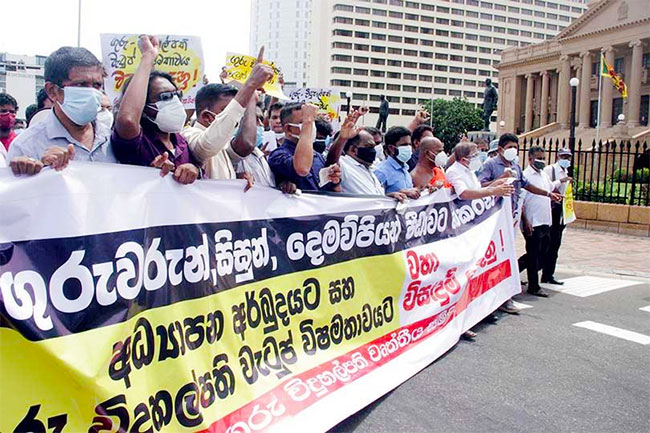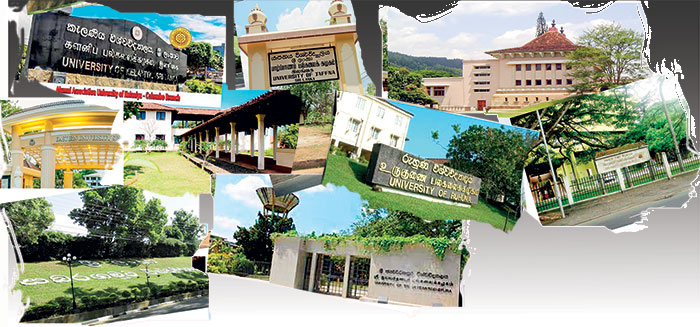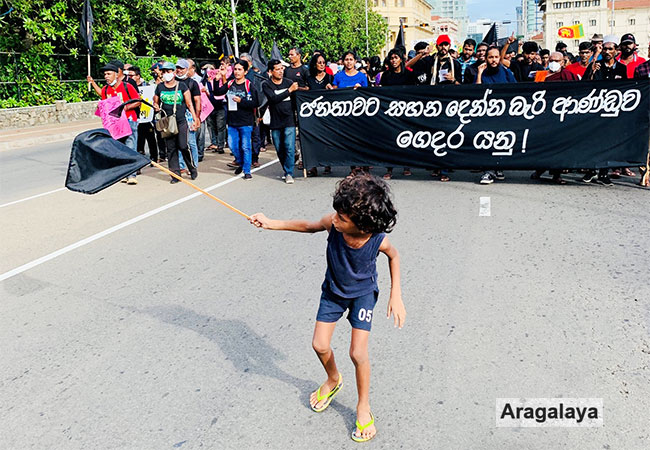By Selvaraj Vishvika
“ The locals were not interested in working in the plantations sector, so people were brought from India to work here.”
As a 16-year-old sitting for my GCE OL examination, I never realised the gravity of these words. Presented to us as an afterthought when discussing the history of our country, I could not see how an entire community and their story of struggle were erased. Nor could I understand the importance of this brief statement against the backdrop of endless historical political reforms. Our texts drew attention to the needs of ‘locals’ and how labour could be easily acquired from elsewhere to suit the whims of our former British colonial masters, dead set on introducing coffee plantations. However, delving into the process of acquiring this labour, the conditions of existence leading to their taking up this arduous task, or this crude objectification of an individual, where they were “brought” to another country, without their consent, was missing in our grand narrative of Sri Lankan history and insignificant, as our sole purpose was passing our examination. Our conformity in unconsciously othering a group of people from the outset of their entry to this country as second-class citizens did not register in our 16-year-old heads.
Interestingly, however, while erasing the existence of those who labour on the plantations, with any reference to Sri Lanka globally, the camera naturally redirects itself towards the flourishing plantations. Greeted with the ever-smiling and welcoming faces of women carrying their straw baskets, plucking tea leaves with their nimble fingers, we stay true to our household name, confirming tea as an unerasable part of our identity as Sri Lankans. With proper branding and quality control at work, tea as a graded commodity has been exported throughout the years, establishing a secure global market and making a remarkable contribution to Sri Lanka’s revenue. Today, tourists can even afford the luxury of briefly testing their tea-plucking skills at plantations as part of their “Sri Lankan experience”. Sumathy Sivamohan, in her Kuppi Column “Two leaves and a bud: the history of Malaiyaham as pedagogy“ (02.01.2024), traces the history of this tea plucker, their community, and their marginalization since their arrival in Sri Lanka almost 200 years ago. Although allowed to feel as ‘rightfully’ part of the country with the Citizenship Act (2003), to this day, the Malaiyaga community, given their ties to a bygone Indian ancestry, are not afforded the amenities available to their peers. Gnannamuttu, in his book “Education and the Indian Plantation Worker in Sri Lanka”, quotes H. W. Cave on “a little too much education and unaccustomed luxury [unfitting] these children [of the plantation sector] for their calling…” Accordingly, private initiatives introduced night (line) schools and missionary education to this community to keep a check on their identity. However, these initiatives stood strong in their unwillingness to enter the expensive enterprise of ‘properly’ educating these outsiders at the cost of their produce, as a labourer’s primary ‘calling’ was tending to the plantations. Even with the government taking over these estate schools and Sri Lanka’s famed non-discriminatory free education policy being implemented, as stipulated in the Kannangara bill (1945), this community was initially left stranded in the margins. According to Mr Rajendran, formerly President of the National College of Education-Batticaloa, our country was better equipped to train planters at managerial levels, as offered in some universities, indifferent to the concerns of the ever-smiling and ever-toiling tea plucker growing the tea straddling the margins of statelessness and citizenship to this day. Stark is this entanglement where there is a need to stunt this community’s growth through literacy and education while simultaneously ensuring they are only ‘fit’ to nip the two leaves and the bud. Thus, this community’s pick-up on the rat race towards development, literacy, and social mobility had been delayed by the state, and to date they are sprinting to keep up.
Upon attending an educational conference on Malaiyagam in Hatton earlier this year, I found the audience’s responses to the research conducted informative, especially on the quality of education afforded to this region. Concerns in student retention rates in the primary and secondary sections were brought up by teachers who made short work of shifting the blame towards the parents. It was also mentioned that students of this region have difficulties entering universities in the Maths and Science streams, and even those interested in pursuing the above or other technical subjects that would secure employment were often encouraged by their teachers to choose either Commerce or Arts, more commonly available to them for their GCE AL examination. The teachers’ rationale for such encouragement is the high expenditure in acquiring this education, even after entering university. However, the unavailability of competent teachers and infrastructure facilities in the plantation sector to offer these STEM subjects undoubtedly bears some weight. Skipping our irreplaceable support system of tuition considered ‘compulsory’ for the GCE ALs, here concerns were raised on the availability of basic Type 1AB schooling facilities afforded to this community. Students from all over the plantation sector temporarily relocate, crowding around the scarce schooling options available to them in the central hills for their AL examinations in the Maths and Science streams. Understandably, even with the government increasing the allocations for university entrants from the plantation sector in these streams, the achievement rates fall heavily short of the estimates without the proper guidance or infrastructure facilities. Interesting, also are the subjects offered under the Arts Stream, mostly Geography, Political Science, and Tamil. On paper, this combination is most viable to improve the chances of students entering the Teaching College or University. However, attention must be given to the curricular contents at these students’ disposal for two long years. For instance, what is considered a sound knowledge of these subjects at the GCE ALs, if there is no discussion on the geographical constraints, the land rights, and the possible solutions offered to the inhabitants of this mountainous terrain? Where are the debates on the blatant human rights violations this community has been subjected to and their ongoing marginalisation? With exacting standards of what is acceptable for an examination through a grading system, the state has made a checklist of what constitutes education, and the students accept as gospel truth a fantasy that completely opposes their lived reality. Within the labels of geography, politics, or history, the student is afforded a sense of how a world works, yet no space is given to question its relevance to the student’s life. Armed with a strong combination of subjects to voice their concerns yet blunting their weapons from subverting the structures crippling them, this community continues to struggle for equality, incapable of tracing their history. The ideological manipulations of this country, ensuring the social demarcations and the identity of Malayaigham as fashioned by them in common discourse, persist through the existing system of education is concerning. Stuck within an endless loop of education that reinforces the social hierarchies, be it geography, political science, or history, these subjects do not offer the students space for dialogue that would bring about change; instead, they accept their lot in life, fearful of being further ousted by society. Accordingly, their conformity to the norm and silence enable their entry as a subject of society at the cost of their community.
Education should be a dialogue. To ensure that learning takes place, we should be willing to not just memorise but also observe, speak, and engage with the information that comes our way. Are we satisfied with a system of learning that assigns grades on an individual’s capacity to retain information without them understanding the contents memorised? What then is the purpose of a teacher? Is it not our concern that our students are incapable of relating what they learn to who they are? Where and how is learning happening if the contents memorised do not translate to a critical engagement with reality and a stepping stone towards social change? This community can fashion an identity for themselves as Malaiyagaham and grow further into their sense of self both within and outside the labels of tea plucker, estate worker, kallathoni, etc., we as a society have plastered upon them if there is room for transformation through education.
The two leaves and the bud commonly refer to the best part of a tea shrub, sought after for its tender shoots. Nipping it in the bud ensures such richness remains exclusive to the few willing to pay the right price. Restricting access to a quality education to this day, are we still echoing Cave’s sentiments? Are we nipping at the identity of the Malaiyaga community and stunting their richness and space for growth, fearful of their potential or fearful of the price we will have to pay?


